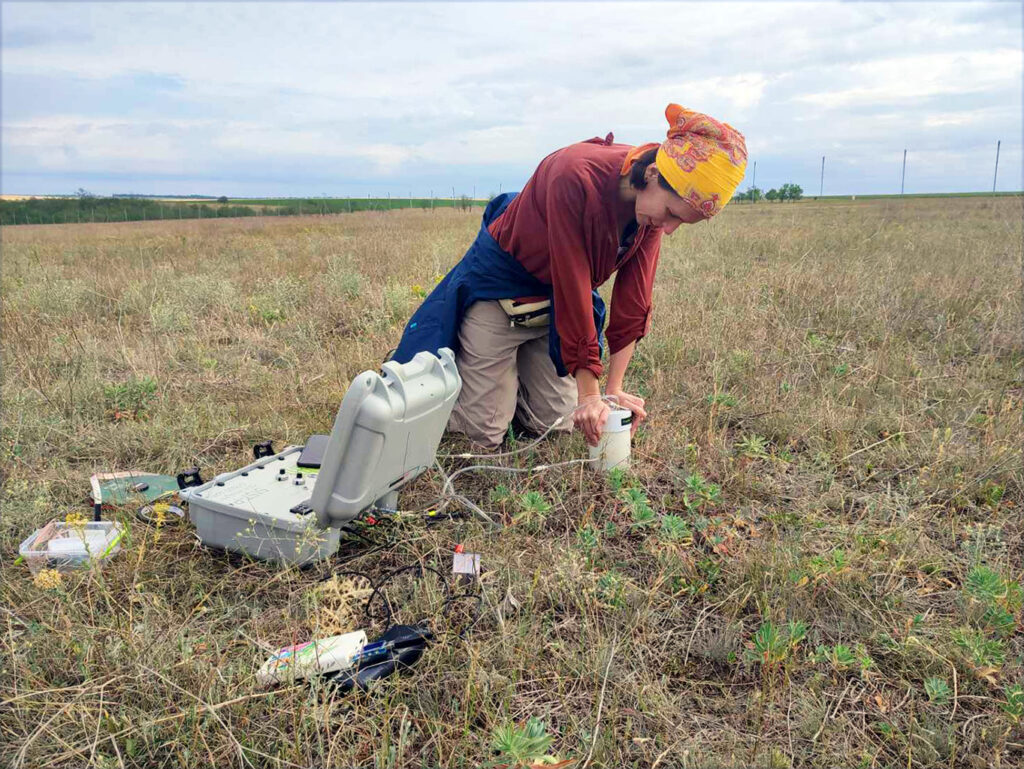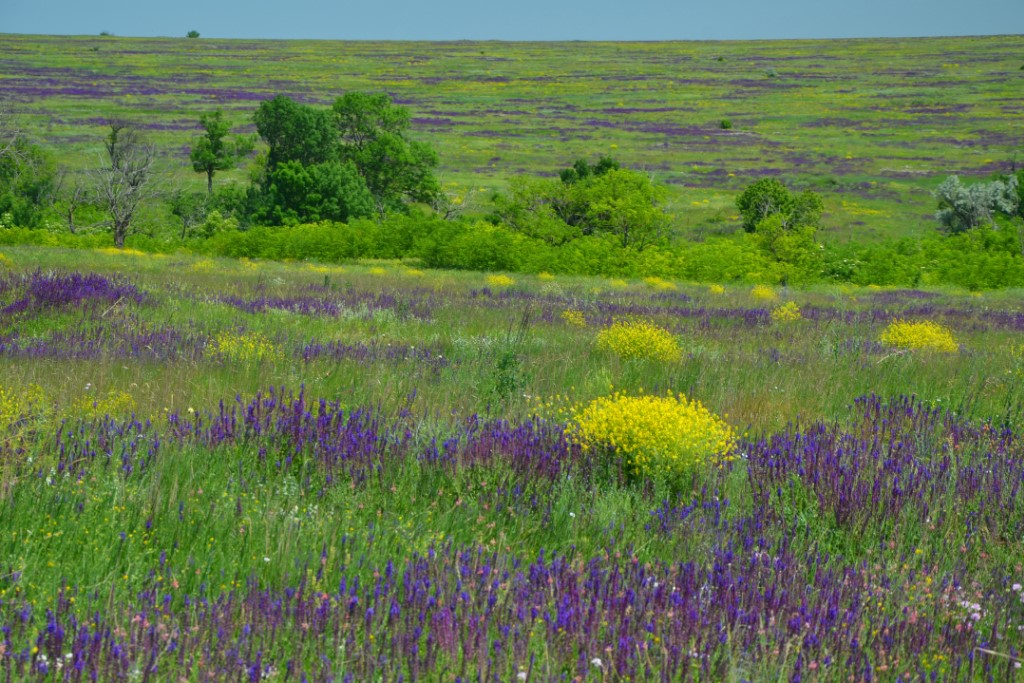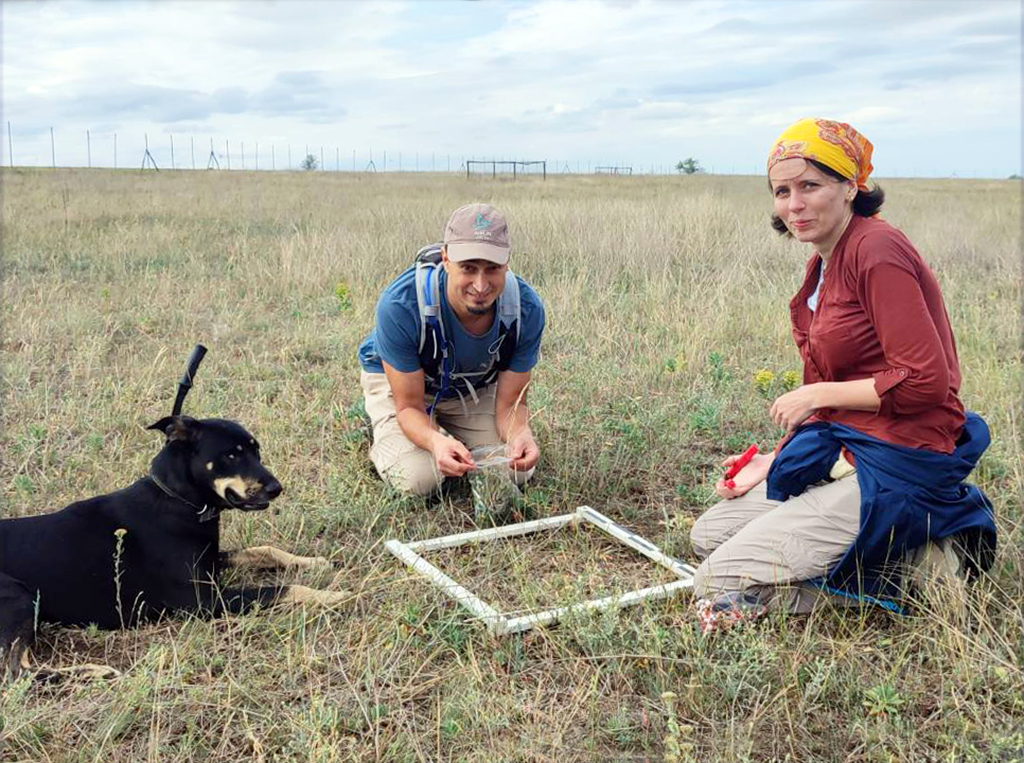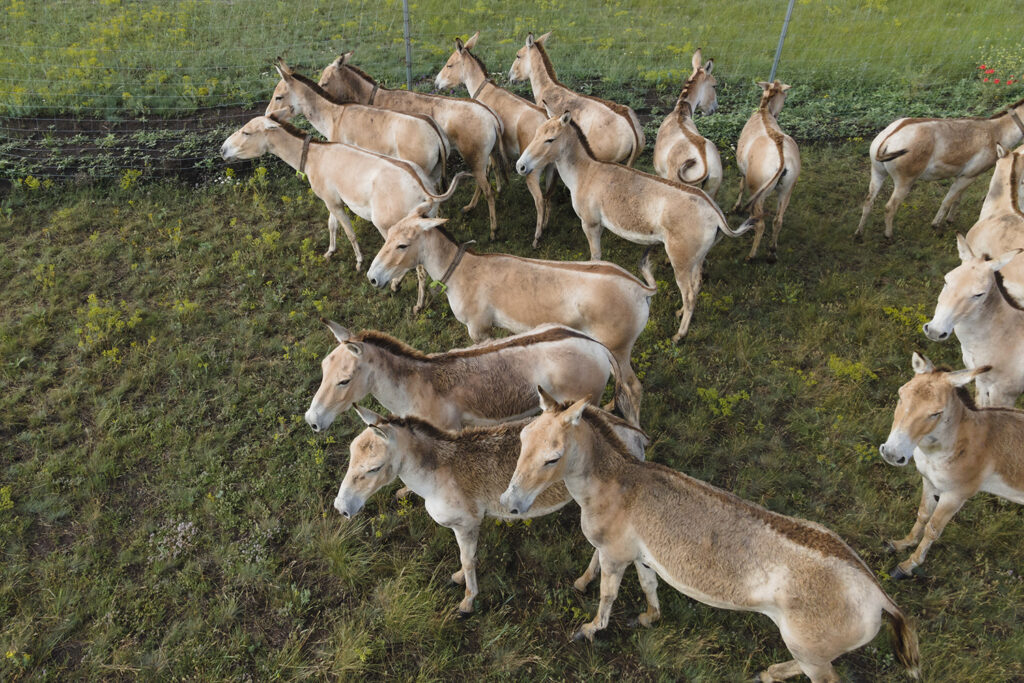The project “Assessing carbon sequestration and storage by dry grassland ecosystems” was launched, implemented by Rewilding Ukraine together with a team of scientists. In the summer, the first project research took place in the Tarutino steppe and in the Biosphere Reserve “Askania-Nova”.

Steppes are one of the most vulnerable natural systems that are threatened with extinction because humans are turning them into arable land. As part of the project, a scientific study of the ability of steppes to absorb and retain (or accumulate) carbon is being conducted. It will help prove their important role in mitigating climate change, and preventing land degradation and desertification. The results of the research will also make it possible to determine the economic potential of “healthy” steppes, which in the future will provide an opportunity for local communities to make a profit on the international carbon market due to the restoration of steppe areas.
Local communities will earn from “carbon credits”
To offset carbon emissions from their activities, companies buy so-called “carbon credits” on the international carbon market, thus supporting the restoration of natural areas that can absorb and retain this carbon. At the moment, the carbon credit mechanism is designed mainly for the restoration of forests and peatlands. The new project should provide a scientific basis for the inclusion of steppe ecosystems in the system of carbon credits, which will improve opportunities to attract financing for the restoration of steppe landscapes.
“As the climate changes, the rural economies need more diverse sources of income, that must include nature-oriented solutions, nature-friendly, simple and cost-effective measures. Expansion of natural areas, particularly steppes, is one of them. After all, steppes in their natural state are capable of providing ecological services and can support the economy of local communities even in the face of climate change. While monoculture farming becomes risky and also leads to chemical pollution, soil erosion, land degradation, and desertification,” says Oleg Dyakov, Rewilding officer at Rewilding Ukraine.

Field research is in full swing
At the beginning of summer, field research began, which would take place at different stages of seasonal vegetation growth in the steppe. Different areas of the steppe – untouched (natural), plowed and restored areas, hayfields, and pastures – will be studied to compare the level of carbon absorption and retention to determine the most effective forms of management in this regard. Research conducted by botanists and soil scientists includes assessment of aboveground and belowground plant biomass, soil moisture and dissolved organic matter content, nitrogen and carbon content, plant respiration, soil carbon dioxide emissions, and more.
“We conduct field research in the Tarutino steppe, located in the Bolgrad District of the Odesa Region, and on the territory of the world-famous Biosphere Reserve “Askania-Nova”, located in the Kherson Region. This is one of the last remaining wild steppe areas in Ukraine and Europe. Together with our partners, we are restoring part of the territory of the Tarutino steppe, which was illegally plowed several years ago. Therefore, the Tarutino steppe provides us with opportunities for comprehensive studies of natural, restored and transformed steppes due to human activity. This will make it possible to draw conclusions and provide recommendations for the sustainable management, restoration and preservation of these most valuable natural systems. I would like to express my gratitude to the specialists of the Biosphere Reserve “Askania-Nova”. While remaining in temporary occupation, they are trying not only to preserve the unique animal and plant life of the reserve, but also to carry out research within the framework of our project,” Oleg Dyakov added.

Reconstruction of Ukraine with a focus on nature
After the end of the war, the reconstruction of Ukraine should be carried out taking into account the world’s leading experience in the use of nature-oriented solutions, which are more sustainable in the face of climate change, do not require constant large financial investments, promote high biodiversity and better human health, and also provide economic benefits to local communities. Such solutions include the preservation of steppes, forests, reservoirs and watercourses in their natural state; rewilding (a new complex approach to restoring nature) of degraded natural areas; “green” infrastructure and the use of nature-oriented approaches in cities, and more.
Therefore, the results of the project “Assessing carbon sequestration and storage by dry grassland ecosystems to improve the political framework and market mechanisms for their large-scale restoration”, implemented with the financial support of the Endangered Landscapes Program, will be useful for all stakeholders.
